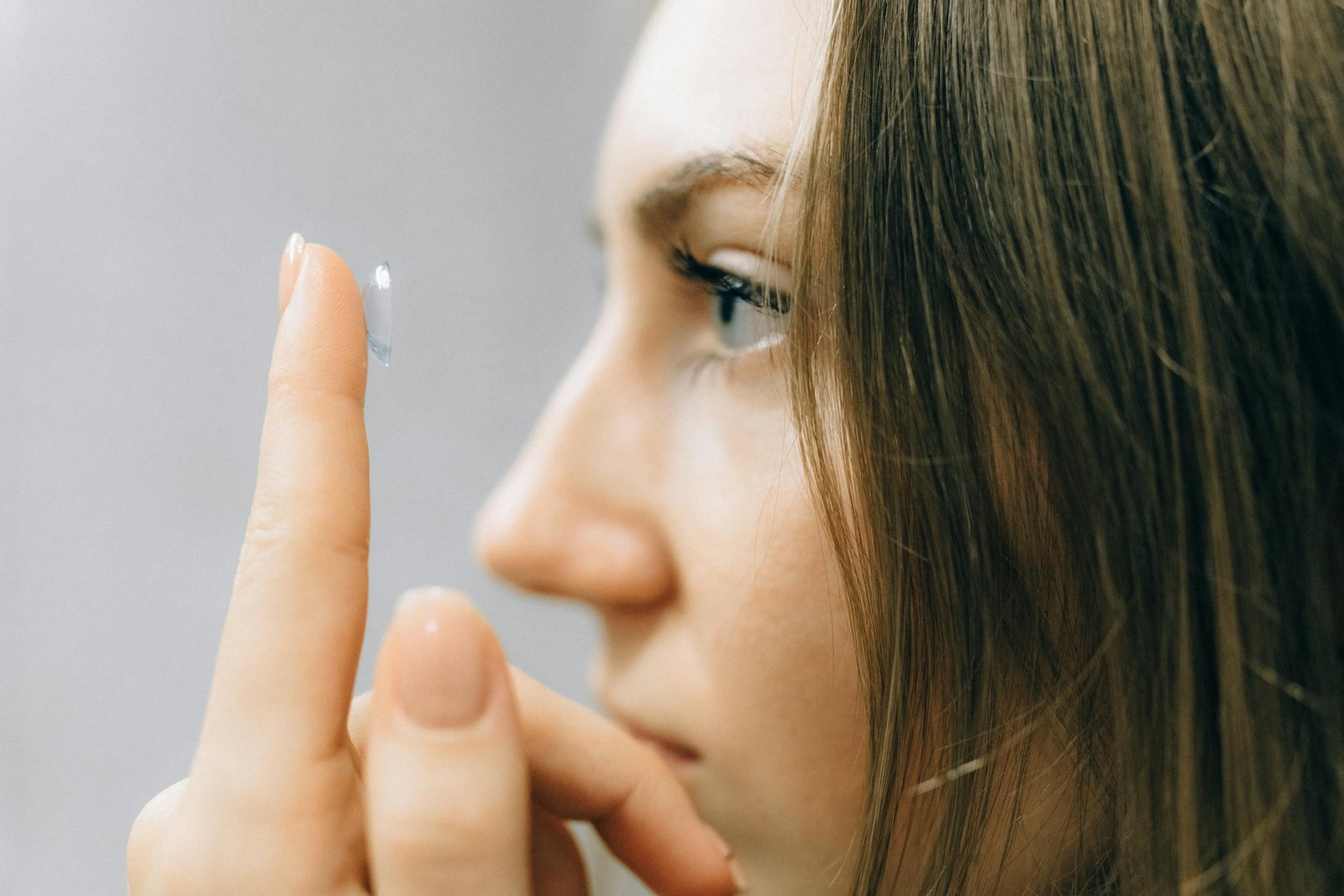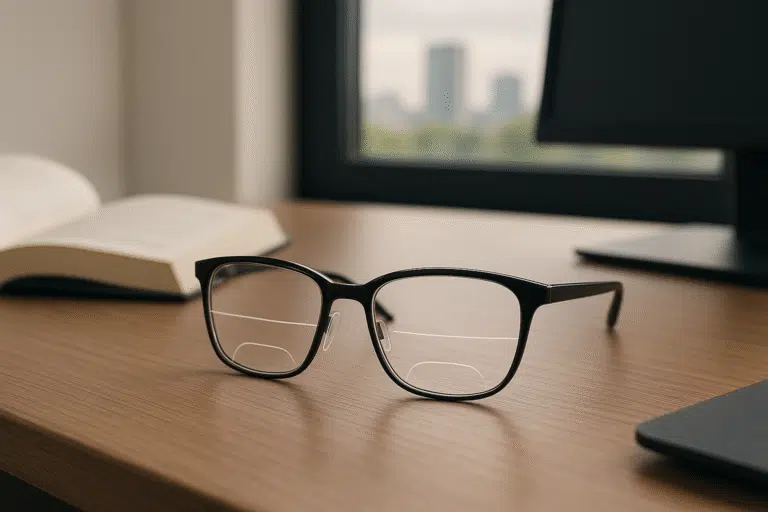Do You Need a Contact Lens Fitting? Don’t Skip This
Considering leaving your glasses to wear contact lenses, yet not sure how to begin? There is a danger of neglecting the most important process in a contact lens fitting. My impression of contacts was nothing but finding the right prescription when I read about it. Little did I know, though, that a contact lens fit is a professional examination of your eyes, which is an eye check-up to test that your lenses totally fit your eye shape, size, vision requirements, and comfort zone.
In this guide, we are going to deconstruct what a contact lens fit is, why it is important, and what you should expect, along with a guide on how to achieve optimal outcomes.
What Is Contact Lens Fit?
Contact lens fit is a special one designed to determine the right kind of lens, size, and shape that fits your eyes. In comparison with eyeglasses, contacts are applied on the surface of your eye; therefore, all contacts have to fit without irritating the eye, causing dry eye, blurred vision, and/or developing less healthy eye conditions in the long run.
Step-by-Step Guide
Step 1: Eye Health Check
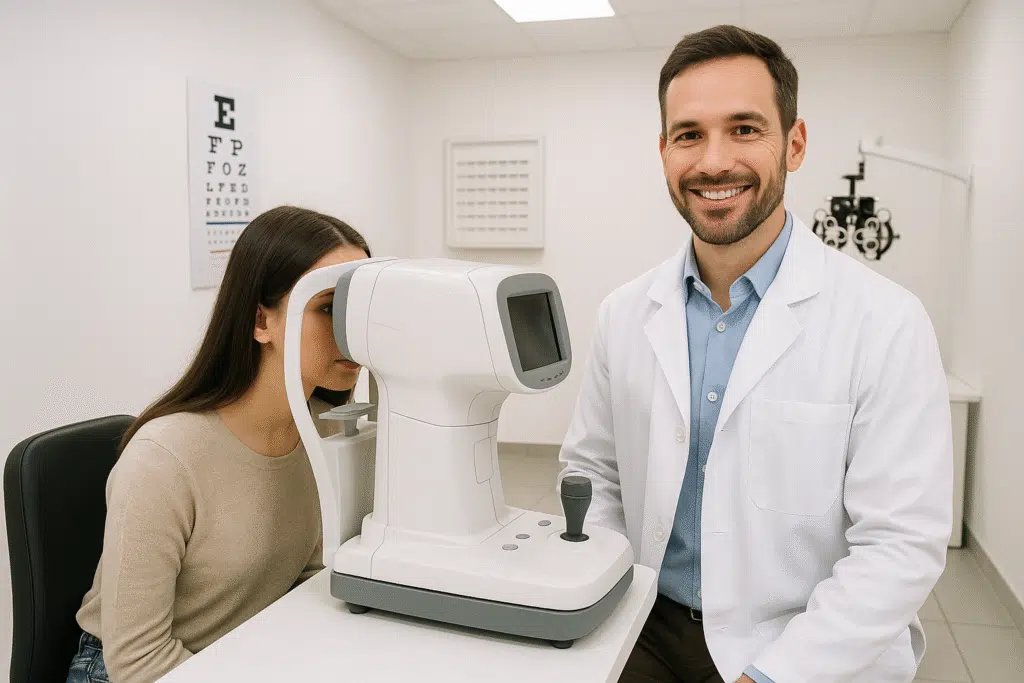
I routinely start with a full eye examination before any lens fitting or any measurements. This will ensure that your eyes are healthy enough to wear lenses.
Complete Eye Check-up
My examination starts with an inquiry into your eye prescription, the pressure of the eye, and overall eye structure. This is useful in identifying the early cases of other diseases, such as glaucoma, infection, or corneal anomalies.
Tear film quality test
A healthy tear film is needed to wear comfortable eyewear. I might suggest special lenses that retain moisture or lubricating eye drops, which hold moisture, when your eyes are too dry.
Potential Risks: Identification
Some eye conditions require special consideration:
- Dry eye syndrome – may need moisture-rich lenses
- Allergies can be irritated by certain materials
- Irregular cornea – requires custom or specialty lenses
Step 2: Lens Measurements
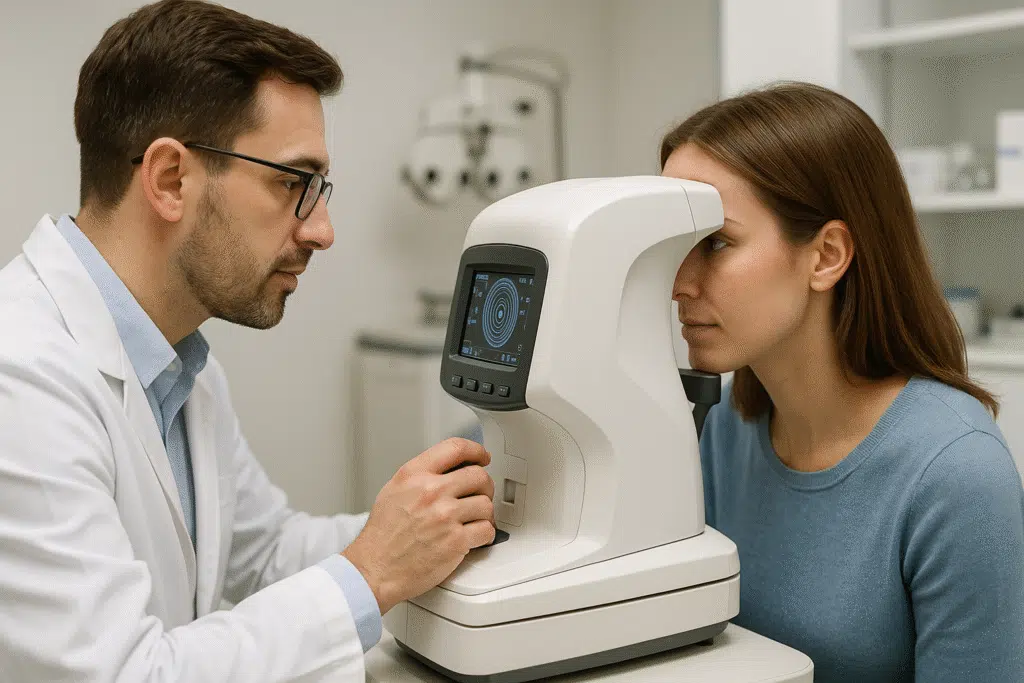
When your eyes are fit for contact lens wear, I take precise measurements in order to ensure the lens fits comfortably and gives you clear vision.
Corneal Curvature
Using a keratometer, I measure the curve of your cornea to select the right lens base curve so it’s neither too tight nor too loose.
Corneal Diameter
I measure the horizontal visible iris diameter (HVID) to choose a lens diameter that fully covers your cornea without irritating the eyelids.
Pupil and Iris Size
These measurements ensure proper lens alignment, especially for multifocal or color lenses.
Corneal Topography
In more complex ones, including astigmatism, I create a 3D map of your cornea to custom-fit a lens on your eye.
Step 3: Selecting the Type of Contact Lenses
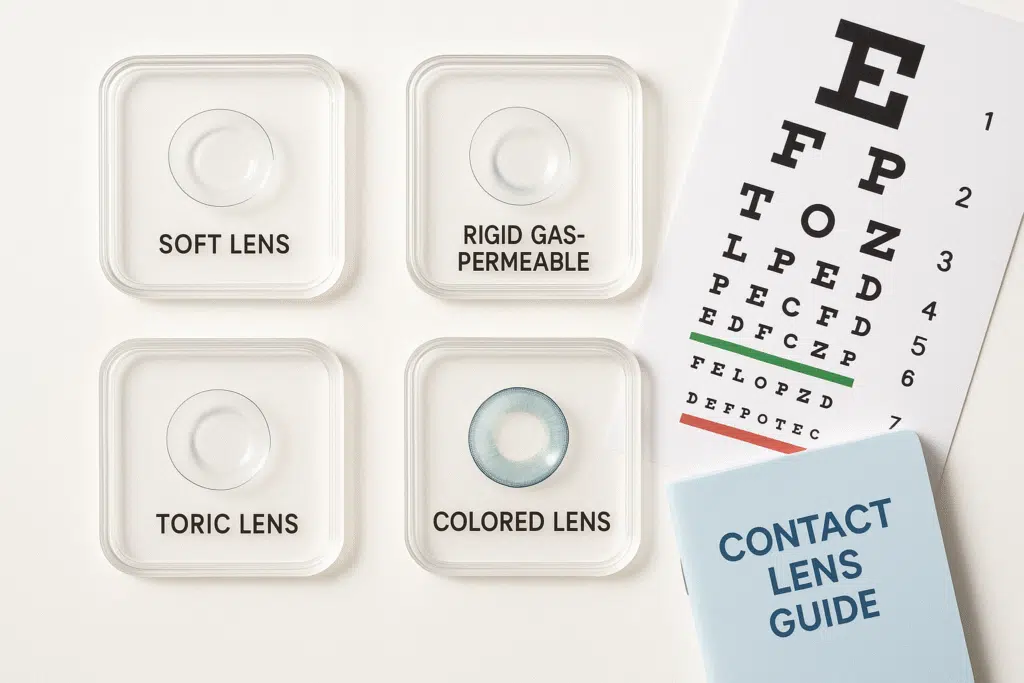
When measurements are taken, I will recommend the kind of lens that will fit your vision needs and your lifestyle.
Soft Contact Lenses
Flexible and comfortable for most people. Options include:
- Daily disposables: A new pair per day, the least chance of infection
- Bi-weekly or monthly lens: less expensive, requires cleaning
Rigid Gas Permeable (RGP) Lenses
Smaller, more durable lenses that deliver clearer images, which are applicable to highly common astigmatism or aberration of the cornea.
Specialty Lenses
For special vision needs:
- Toric lenses: Astigmatism
- Multifocal glasses: In presbyopia (focus disorders with age)
- Scleral lenses: severe dry eye/irregular corneas
Read Also: 5 Easy Ways to Add Padding to Glasses Ends in 2025
Step 4: Trial Lens Fitting and Comfort Check
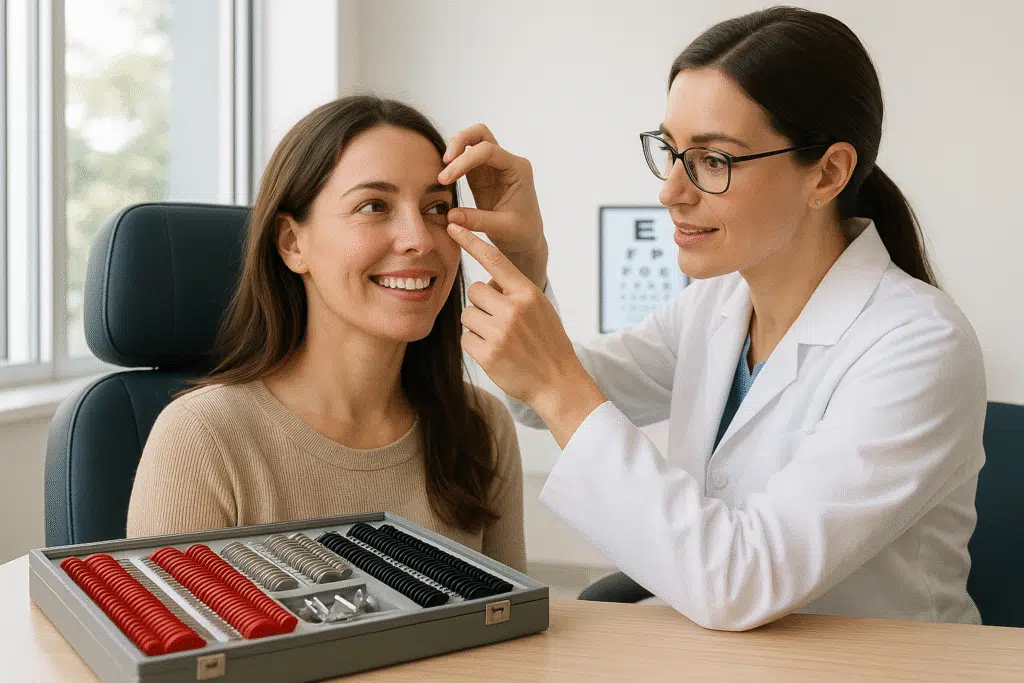
This is where you try lenses before making a final choice.
Here’s what I do:
- Place trial lenses on your eyes
- Let them rest for a few minutes
- Check lens movement, positioning, and comfort
- Ask them for feedback back how they feel
- Revise according to requirements.
Step 5: Training You to Handle Contact Lenses
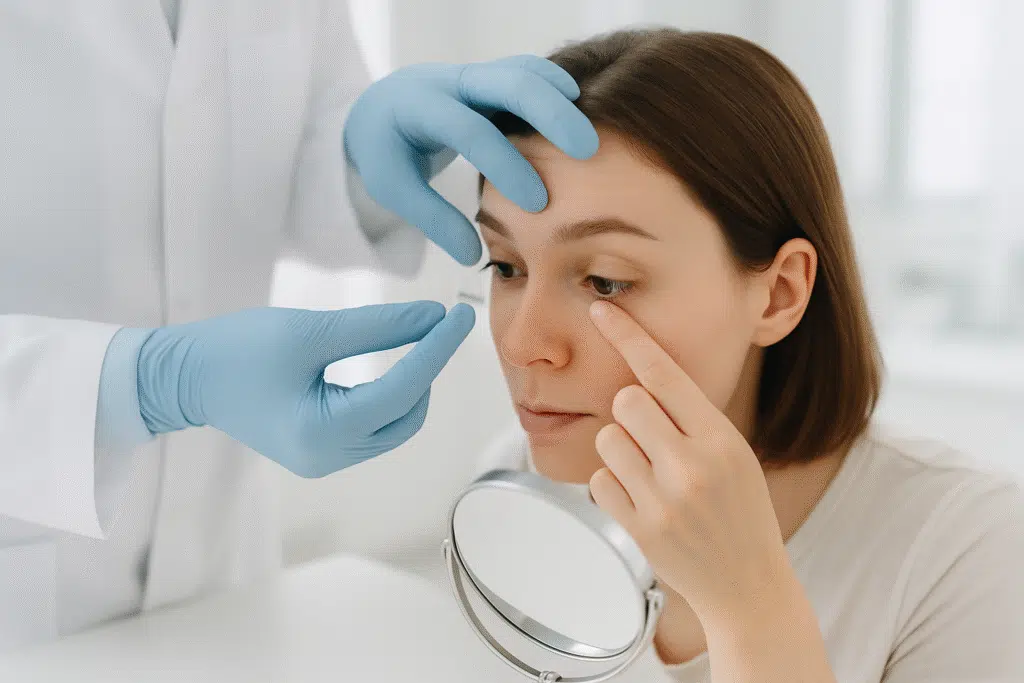
Always make sure you leave with the knowledge to care for your lenses properly. You’ll learn:
- How to insert and remove lenses safely
- How to clean and store them
- How often should they
- Red flags that signify your need to eliminate them at once (redness, ache, or obscured vision)
Step 6: Follow-Up Appointments for Eye Safety
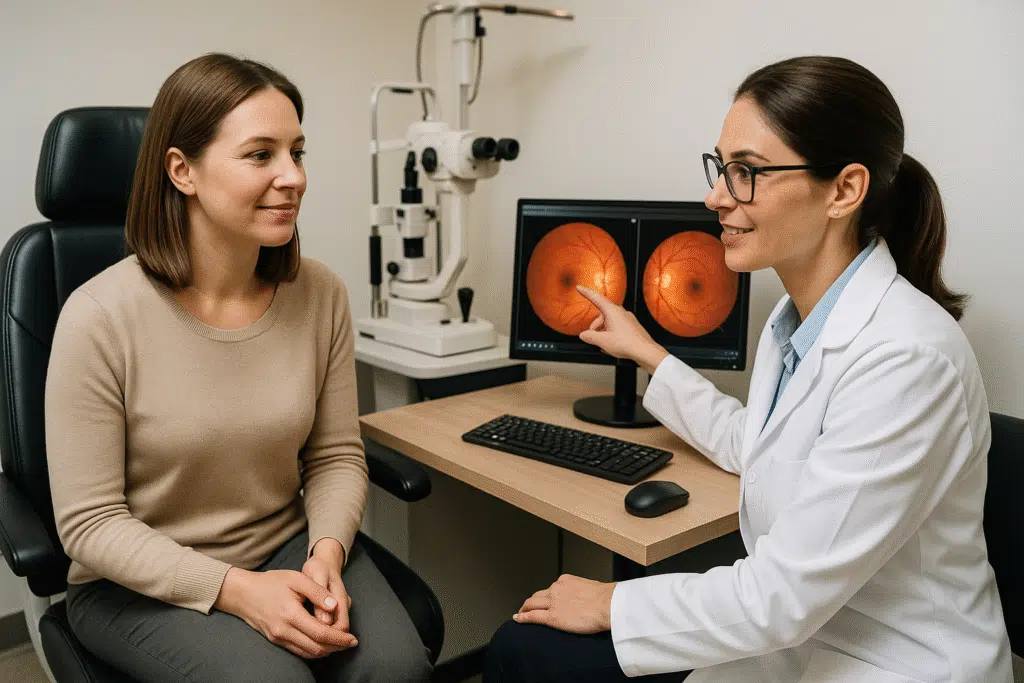
You may feel that your lenses are okay, but I always put in follow-ups 7 days later.
Why Contact Lens Fit Is Such a Big Deal to You
By deciding to use contact lenses, you have them on your eyes throughout the day. This implies that any size, shape, or material mismatch may present a serious problem.
This is my reason why I never advise going without a pro fit:
- Comfort: Ill-fitted lens might result in irritation, redness, or grittiness.
- Quality of Vision: Properly cut and sized lenses allow you to have perfect vision without being defective.
- Eye Health: Exercise reduces the risk involving infections, corneal edema, and dry eyes.
- Long-Term Comfort: The appropriate fitting helps you to wear the lenses without any problem for a number of years.
FAQs
What is a Contact Lens Fitting?
It’s an eye test it’s to check your eyes and choose your lenses.
How long does it go?
Around 30–60 minutes.
Do I need it if I wear eyeglasses?
Yes, cast (lens prescriptions) are different than those of glasses.
Can I avoid it?
No, it can irritate and eyes.
How often should I do this?
Once a year or on your own, feeling.
Read Also: What to Do With Old Spectacles in 2025: Reuse & Recycle
Final Words
A correct fit of a contact lens is needed to provide comfort, good vision, and to protect at eyes. An eye examination determines the selection of your lenses to suit your eye shape, prescription, and lifestyle requirements. This should never be overlooked as it is the most sensible way to prevent irritants, infection, and low-quality vision.
Get your custom lenses from a competent optometrist and wear your lenses safely and comfortably daily.

